Which Angle?
Before I start the Blog today, apologies for the mistake in yesterday's blog where I accidentally typed vertical view for landscape view. Now onto today's topic.
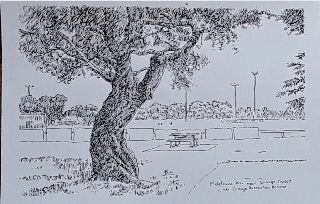
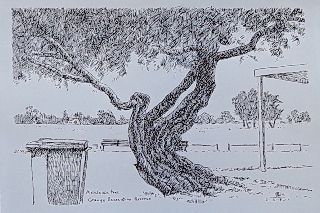
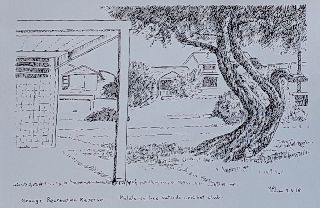
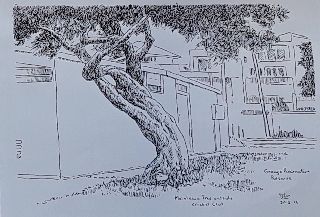
Which angle do you like best? And don't forget about the background to the subject which adds to the effect. Of course you can always leave out elements if you so choose. Personally I like No 1 and No 4. The first view shows off the majesty of the tree: its grandeur and unity. No 2 seems to imply disharmony, from the branches going in different directions to the individual strands of the trunk. No 3, ignoring the fact it is overshadowed by the carport structure, to me implies indecision. Whereas, in No 4, even though you can see the individual strands making up the trunk there is a strength, a resilience that sends a message of survival against the elements. And the branch coming from the left hand side is like a symbol of protection across the tree, a caring, unifying force. See what you can make of the different images. That's the wonderful thing about art- we can all have different interpretations. And isn't it amazing how different the same tree looks from different angles.
When I decided to paint the walls of the old house in Bendigo I had to choose from several photos I had taken. I had to decide which angle was the best for the effect I wanted to achieve. First I considered the front view of the house which is all about the house as a whole and not the individual walls.
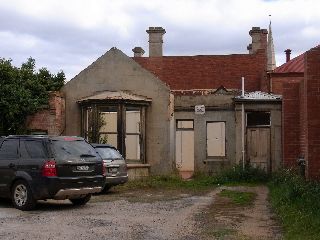
Whereas the second view I considered, is about one wall and the bay window. It would make a nice painting but was not what I was looking for. As I wanted to create a narrative beyond the skeleton of the house I had chosen to paint the image in a landscape view which helped narrow down which wall or walls I wanted in my painting.
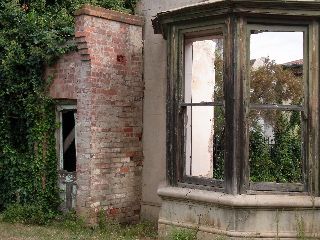
Therefore I liked the view from the inside out of the house as it focuses on the walls, has the added touch of interest created by the bay window and would allow me to create a narrative beyond the windows and door.
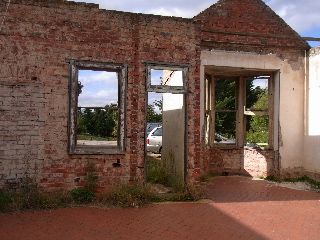
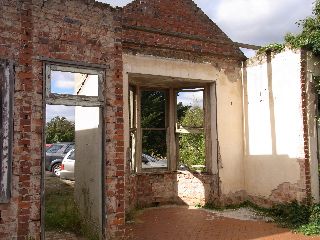
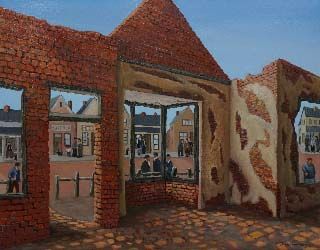
Even the walls have helped tell the story:see them as chapter headings if you like. It’s important to achieve harmony in your composition so the walls, windows, door had to complement each other. There are some basic rules to creating a good composition which we will discuss in a later Blog.
>Painting Hint
Be careful where you place an object in a painting. Don’t be frightened to change the view, change the perspective or to make changes to your under drawing. Before you start you need to have at least a rough idea in your mind what it is you want to achieve. By the way, my advice is to forget about the public as you can never satisfy everyone. Paint, draw, sculpt for yourself. Engage in your art activity, using your chosen medium, because you can't imagine your life without having the time and ability to create. As we get older we might need to adapt in some way. Don't fight it. Find a different route to your destination. If your hands shake its harder to do small figures so do larger ones. Your eyesight might be weaker so you need to create larger objects. For six years I taught painting in a nursing home with two of my friend. We met people who were incapacitated in the most appalling ways by physical and neurological illnesses but they still turned up every week to paint. Their passion, their determination, their ability to adapt was a wonderful lesson to us all.
Now that I've got that little lecture off my chest, where to next? I want to continue a little more with this theme of looking at the same subject in different ways. Monet produced a series of paintings on Rouen Cathedral. And, of course, Vincent, did I think eleven paintings of sunflowers and I don't think that's counting the ones in the fields. So tomorrow a touch of these great artists.
Please email me if you have any special requests of topics or artists to be covered in the blog.
